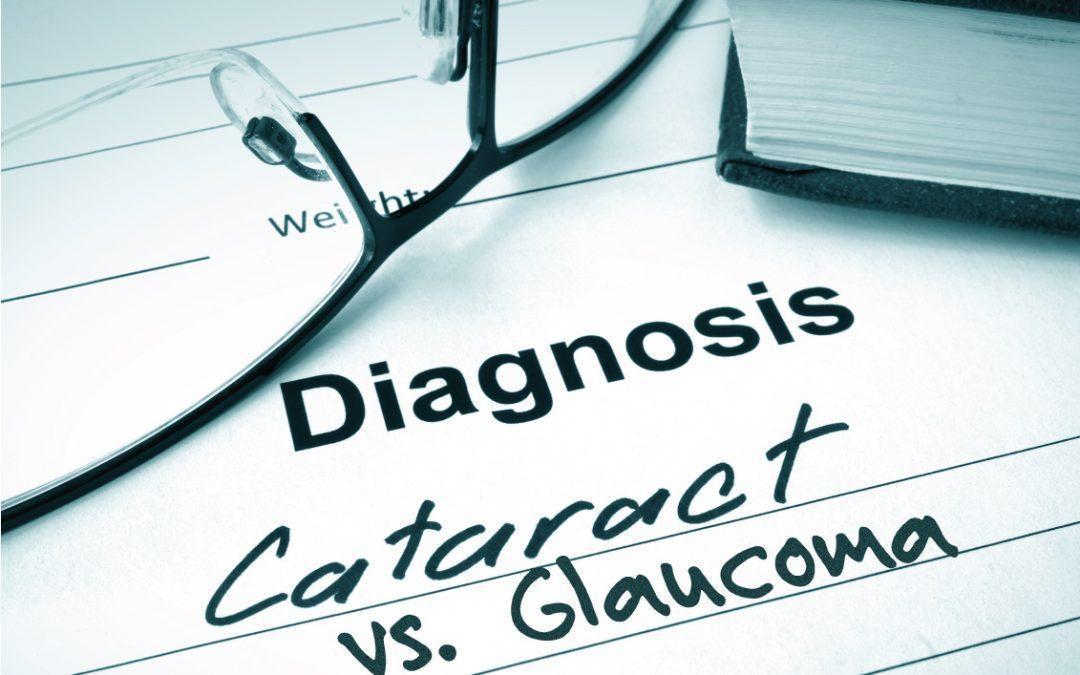Both glaucoma and cataracts are physical conditions which cause loss of vision. Cataracts are gradual and painless and are manifested by a loss of transparency; glaucoma, on the other hand, can be either quick and painful or slow and subtle. A cataract is a change in the lens of the eye; the result is cloudiness as light is prevented from entering the eye properly. Glaucoma is a condition where a buildup of pressure in the eye causes damage to the optic nerve which is the vital link of the eye to the brain which processes visual information. Cataracts are unlikely to be the cause of blindness, not so with Glaucoma; it can cause irreversible blindness and must be treated.
Glaucoma and cataracts are more prevalent in people who suffer from diabetes. Although glaucoma may be worse in one eye than the other, usually both eyes are affected. There are a number of different types of glaucoma, the most frequent is called “open angle”; it develops slowly. The cause is fluid which collects in the chamber in the front of the eye; under normal circumstances, this fluid drains away as new fluid is produced to replace it. In the case of glaucoma, this fluid is prevented from flowing out when the minute drains become blocked, as new fluid continues to be made, pressure builds up in the eye and eventually, the optic nerve is damaged.
Both cataracts and glaucoma can be treated surgically but unfortunately, the loss of vision caused by glaucoma cannot be reversed whereas it can be reversed with cataract surgery. When cataracts begin to have a detrimental impact on everyday life, it is time to have them surgically removed. With glaucoma, the symptoms are very different; it can happen suddenly and can be the cause of rapid loss of sight along with acute pain, nausea and blurred vision.
Cataract surgery is different than the surgery used to treat glaucoma. In the case of cataracts, the lens of the eye is removed and replaced with an artificial lens; glaucoma surgery often involves the use of a laser which is used to open the tiny canals which are blocked, stopping the fluid from escaping from the front of the eye. When the conditions are caught and properly treated, the outcome can be positive. In the case of cataracts, there often is no degree of urgency, with glaucoma early diagnosis and intervention is necessary.
